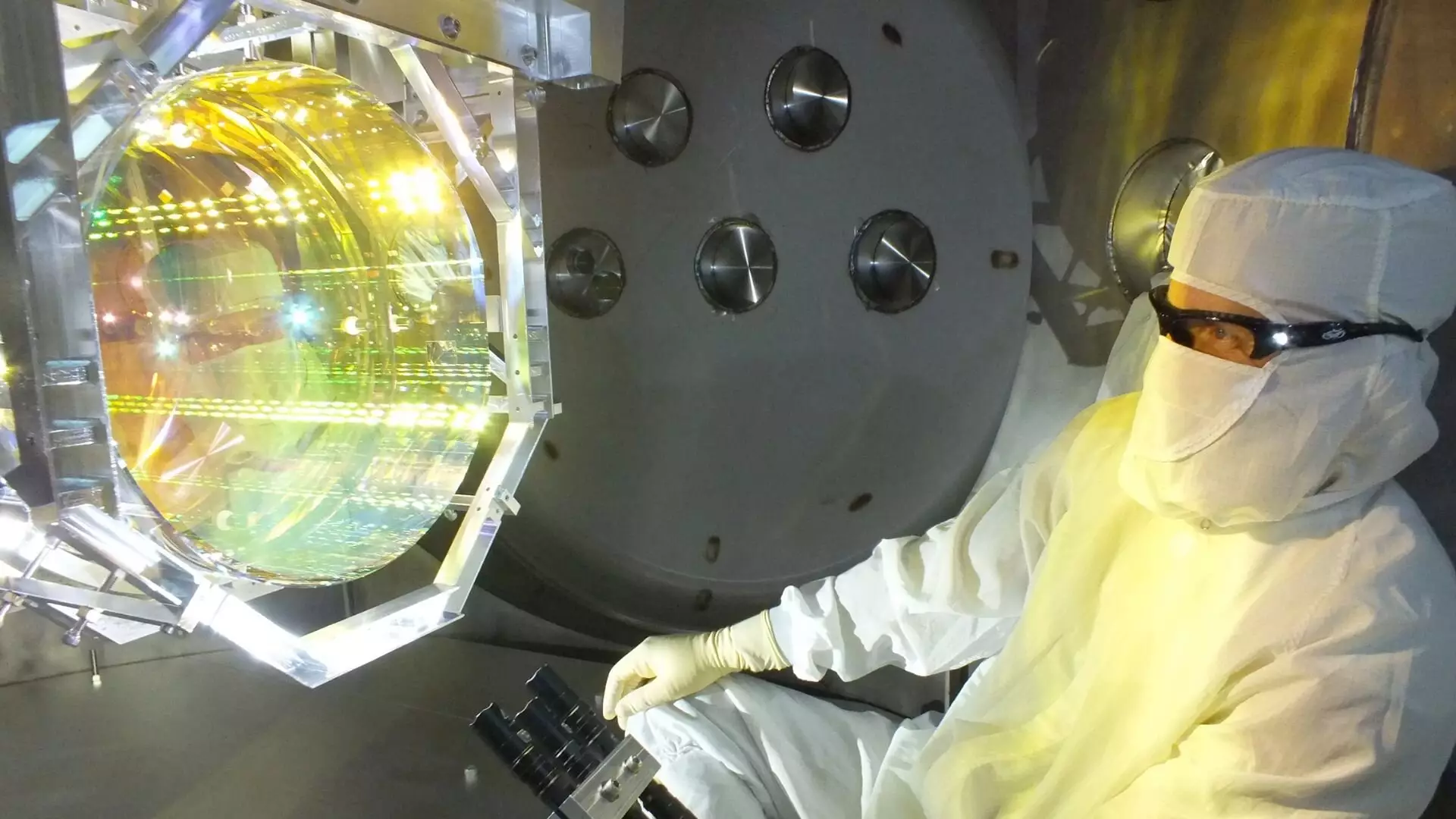Dark matter remains one of the most intriguing enigmas in modern astrophysics. Though it constitutes roughly 30% of the universe’s mass-energy content, its elusive nature complicates our understanding of the cosmos. Dark matter does not interact with electromagnetic forces, meaning it neither emits, absorbs, nor reflects light, rendering it virtually invisible to contemporary observational instruments. Our understanding of this mysterious entity primarily derives from its gravitational effects—manifested in the dynamics of galaxy formations and the movement of galaxy clusters. Despite decades of research, the precise nature of dark matter remains an open question.
Recent innovative research published in Physical Review Letters has proposed a cutting-edge method to explore a particular candidate for dark matter known as scalar field dark matter. Conducted by a team led by Dr. Alexandre Sébastien Göttel from Cardiff University, the study suggests utilizing gravitational wave detectors such as the Laser Interferometer Gravitational-Wave Observatory (LIGO) to advance our search for this enigmatic form of matter. Dr. Göttel, who has transitioned from particle physics to gravitational wave data analysis, expressed enthusiasm for the opportunity: “The chance to investigate dark matter through LIGO was an ideal means to leverage my background while immersing myself in the intricacies of interferometry.”
Understanding Gravitational Waves and Their Detection
LIGO is a sophisticated piece of technology designed to detect minute fluctuations in spacetime caused by gravitational waves—ripples produced by catastrophic astrophysical events like black hole mergers. The apparatus features two perpendicular arms, each measuring 4 kilometers in length. A laser beam is directed along these arms, which are then recombined to examine the resulting interference patterns. When a gravitational wave passes through, it causes contraction and expansion of spacetime, leading to shifts in the distance each arm experiences. This alteration in distance manifests as a variation in the interference pattern, an indicator of a detected gravitational wave.
Scalar field dark matter represents a theoretical framework involving ultralight scalar boson particles, characterized by their lack of intrinsic spin and unwavering properties in spatial rotation. These particles are believed to interact weakly with ordinary matter and light, which affirms their potential as candidates for dark matter. Moreover, the wave-like nature of scalar field dark matter allows for the formation of stable structures, akin to clouds that traverse space without diluting. As Dr. Göttel explained, “Some theories propose that dark matter exhibits wave qualities rather than purely particle-like properties.”
Research Methodology: Data Analysis and Simulations
The research team employed data from LIGO’s third observation run, extending their analysis to lower frequency ranges (10–180 Hertz) to enhance the sensitivity of their search. Unlike prior methods that primarily considered effects on beam splitters, this study innovatively included influences on the mirrors located in the interferometer arms. Dr. Göttel elaborated, “The oscillations generated by dark matter fields affect all atoms in the universe, meaning that taking into account their influence on our test masses was essential.”
To comprehend the anticipated interactions of scalar field dark matter with LIGO’s components, the team devised a theoretical model. Following this, they utilized advanced simulation software to predict the potential effects of dark matter on LIGO’s experimental output. These simulations established a baseline for identifying signals that could indicate the presence of scalar field dark matter in the observable data.
Findings and Impacts: Redefining Limits
While the analysis did not yield conclusive evidence for scalar field dark matter, it allowed the research team to establish new upper limits regarding the interaction strength between dark matter and the components of LIGO. Notably, their results improved the coupling strength threshold by a factor of 10,000 compared to earlier studies within the analyzed frequency range. Dr. Göttel remarked on the significance of their approach: “By considering additional differential effects in the test masses and employing a newly devised analysis method that maximizes statistical power, we have achieved unprecedented results.”
Looking Ahead: Future Implications for Dark Matter Research
The research not only enriches our understanding of scalar field dark matter but also lays the groundwork for future studies. By refining LIGO’s apparatus—such as modifying mirror thickness—the team suggests that even minor enhancements could facilitate substantial advancements in dark matter detection. Furthermore, ongoing research and the next generation of gravitational wave detectors hold promise for outpacing other indirect methods of detecting dark matter, potentially allowing scientists to rule out entire categories of theoretical constructs associated with this mysterious component of the universe.
Current explorations utilizing gravitational wave detectors like LIGO represent a frontier in dark matter research, one that could ultimately unravel the complexities of one of the universe’s most significant mysteries.

